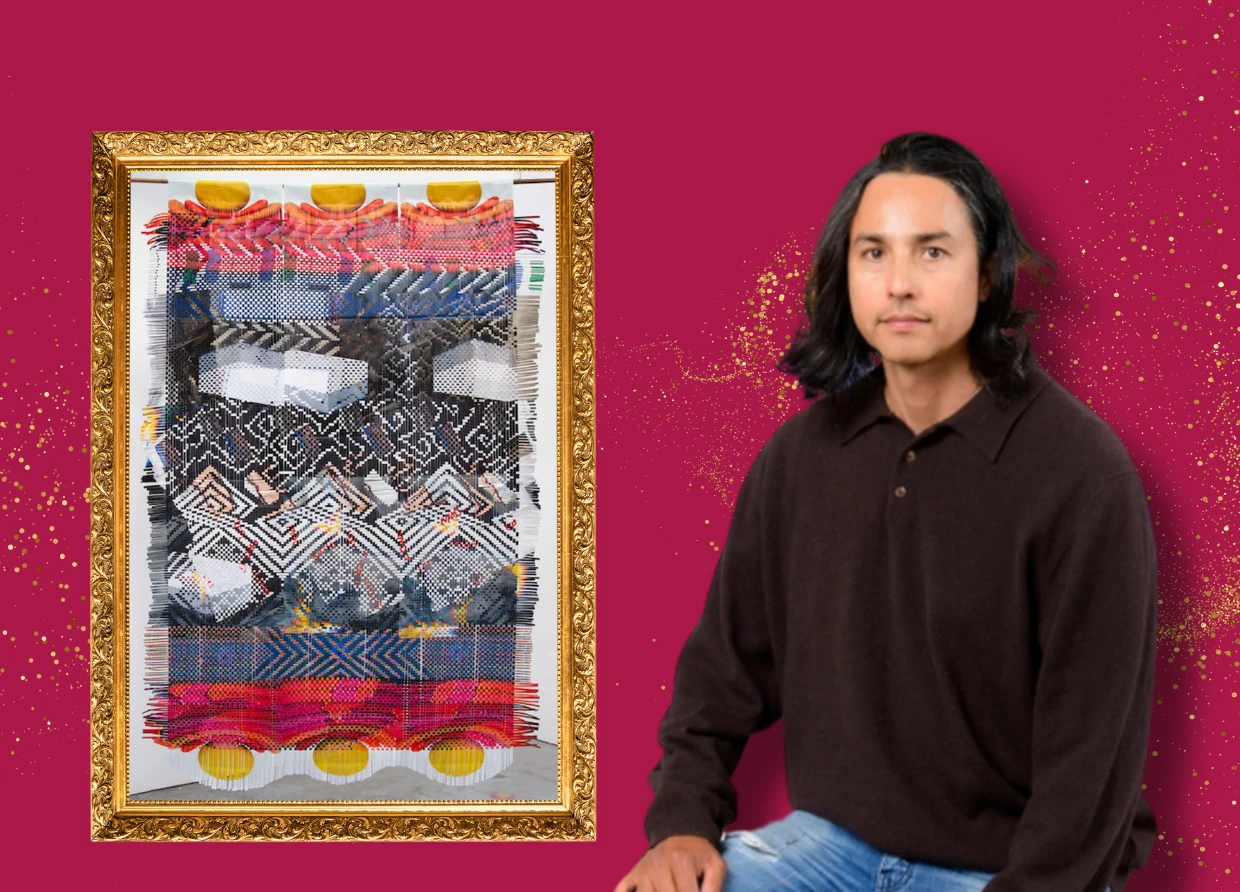ARTISTRY FROM WASTE: MIGUEL ARZABE'S 'LAST WEAVING' FEATURED IN SAN FRANCISCO EXHIBITION
Exhibition Highlights Miguel Arzabe's Unique Tapestry Made from Art Catalogues, Exploring Themes of Consumerism and Environmental Impact

In a powerful statement on consumerism and artistic innovation, Miguel Arzabe’s captivating tapestry, Last Weaving, will be prominently displayed at the Institute of Contemporary Art (ICA) in San Francisco as part of the exhibition The Poetics of Dimensions. The show, which runs from October 25 to February 23, 2025, showcases artworks created entirely from found and discarded materials, offering a fresh perspective on the value of what is often overlooked.
Arzabe, a young artist whose journey began by visiting art shows across the U.S., drew inspiration not only from the exhibitions but also from their catalogues. His fascination with these documents led him to craft Last Weaving in 2018, a large Andean tapestry meticulously woven from thin strips cut from art show catalogues. The work serves as a testament to the timelessness and permanence of art, reflecting a blend of ancient patterns with contemporary materials.
Before finding his niche, Arzabe faced challenges in selling his pieces, which also included tapestries made from used movie posters and pamphlets. However, the art market began to embrace his unique approach, culminating in this significant exhibition. “These are all materials we recognize, but the artists have alchemized them,” explained curator Larry Ossei-Mensah. “We hope to engage viewers in thinking about consumerism, its aftermath, and how art can breathe new life into discarded objects.”
The Poetics of Dimensions has a compelling backdrop, originally set to be housed in a former school gym in the Dogpatch neighborhood, but was relocated to the Cube, a historic former bank building in downtown San Francisco. This shift reflects the ongoing changes in the city, where many commercial spaces have remained vacant due to a shift in work culture.
Alongside Arzabe’s tapestry, the exhibition features a diverse range of artworks, including Retirement by Hugo McCloud, made from fused strips of plastic bags collected from his travels, and Neapolitan by Anthony Akinbola, created entirely from stitched durags. Each piece in the show aims to question societal norms and highlight the often-invisible labor of waste collectors, revealing the complexities of global waste supply chains.
“As we uncrate the artworks, we aim to help viewers navigate the world through artistic practice,” said Alison Gass, the museum’s director. The display also serves as a critical commentary on social inequality, with artists like McCloud utilizing their work to spark conversations about what we often ignore.
Arzabe’s Last Weaving epitomizes this dialogue, as he reflects on the impact of the Bay Area's tech boom. “So much money was directed towards creating newer and more complex technology,” he said. “I wanted to demonstrate that complexity and value could be created through humble materials.”
With its blend of artistic ingenuity and social critique, The Poetics of Dimensions invites visitors to reconsider their relationship with discarded objects, offering a glimpse into the transformative power of art.
#THE S MEDIA #Media Milenial #art exhibition #Miguel Arzabe #Last Weaving #contemporary art #found objects #consumerism #environmental impact #Institute of Contemporary Art #San Francisco #tapestry #social commentary #waste collectors #artistic innovation #global waste supply chains #creative reuse #Poetics of Dimensions


























